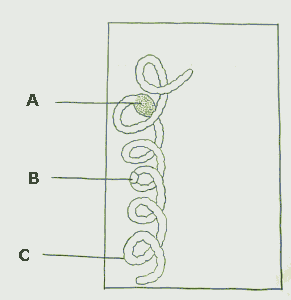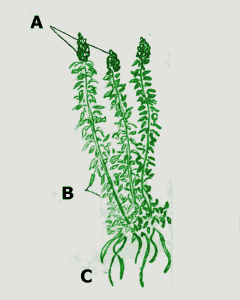
- __________
- __________
- __________

- __________
- __________
- __________
- Cows
- Cyanobacteria
- Moss
- Lycopodium cernua
- Akinetes
- Eggs
- Flowers
- Pollen
- Seeds
- Sperm
- Spores
- Water
| _____ Club moss | A. Chuukese |
| _____ Kidien mal | B. English |
| _____ Lawanini | C. Fijian |
| _____ L'aw L'aw | D. Kapinga |
| _____ Lycopodiella cernua | E. Kosraen |
| _____ Ma in tefuroh | F. Latin |
| _____ Manu manga manga | G. Nukuoran |
| _____ Suwanonw | H. Pohnpeian |
| _____ Unen katu | I. Yapese |

